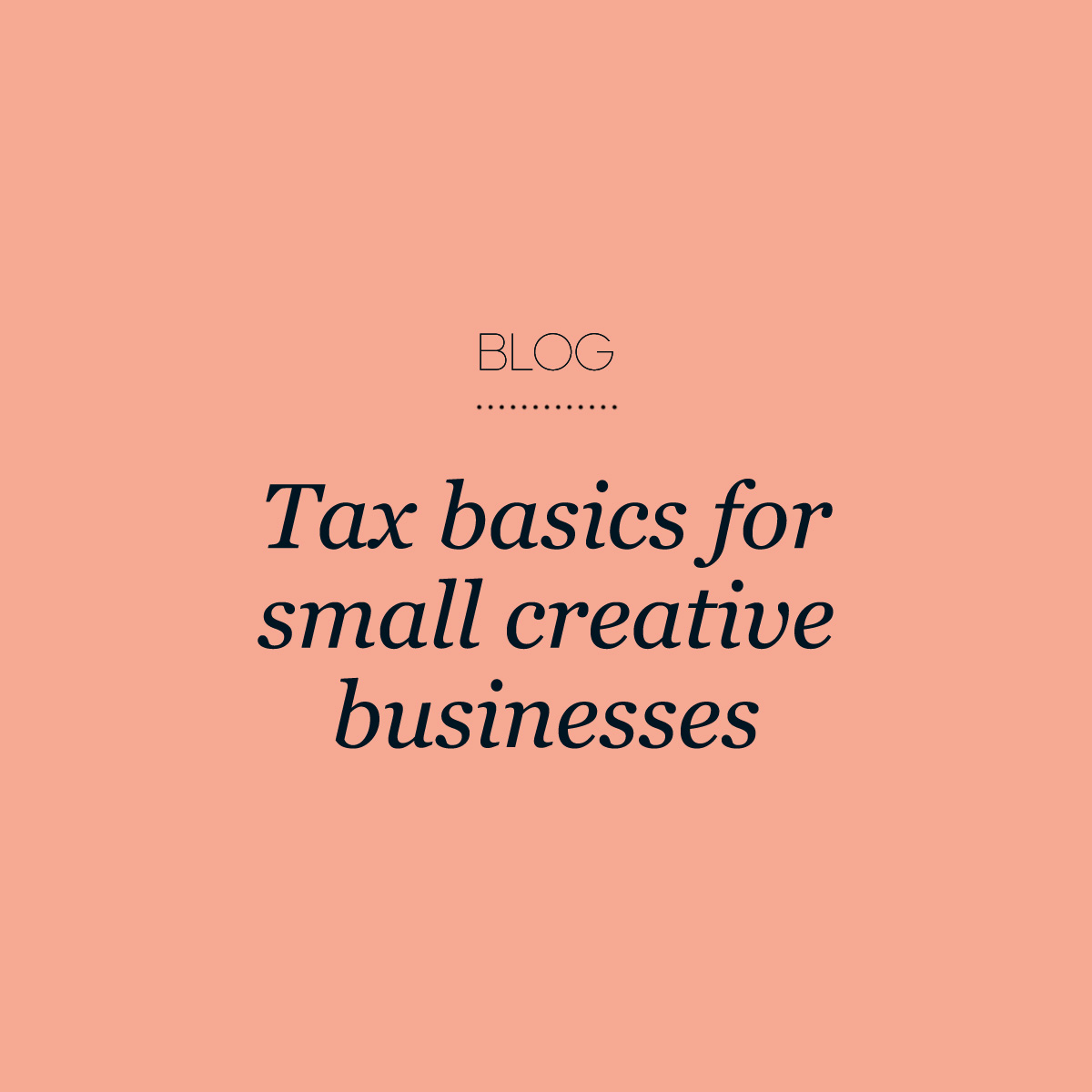Tax basics for small creative businesses
Just want to be creative and not think about your tax? So do most of us, however there are many administrative tasks to running a small business and sometimes they can get in the way of being creative and doing what you love. Unfortunately, most of these tasks are important and avoiding them can land you in trouble. Tax is definitely one of those things, admittedly one that a lot of people find the least enjoyable. Here are some tips to help you prepare for your tax.
Business versus individual It can be really easy to lose the distinction between “your” money and “the businesses’s” money, especially when you’re just starting out or are a sole trader. To make tax simpler, ensure that these are clearly defined. A simple way to do this is to have a business bank account in addition to your personal bank account, and make sure all funds going in and out for the business are coming from here. It’s not a bad idea to have a few business accounts, such as a savings account, a credit card, and a GST payment account (if applicable) that you can transfer funds into as sales are made.
Be ready Don’t leave it to the last minute; it is much easier if you prepare yourself as you go throughout the year. When it comes to your tax, you need supporting documentation. So instead of scrambling to find your receipts at the last minute, file them as you go. The ATO will accept electronic or paper receipts, so either scan and file them on your computer or put paper receipts into a folder. Find a system that works for you and is easily retrievable. The types of documentation that you are required to have are:
- Sales receipts
- Expense invoices
- Bank statements
- Credit card statements
- Employee records (wages, super, tax deductions, contracts, etc.)
- Vehicle reports
- List of debtors and creditors
- Assets purchases
Not great at filing as you go? Get a tray or plastic folder and just put them all in there. Then set yourself up a regular calendar reminder to spend thirty minutes each week or month doing your filing. That should be enough and will make tax time much easier.
Don’t forget, the ATO requires that you keep your records for five years, so make sure you keep your files once lodged.
Doing it yourself If you decide to lodge taxes yourself, you can use myGov as this is now for individuals and sole traders (e-tax has been replaced). This is an easy, quick, and secure way to lodge. Once you’ve opened a myGov account, you will get access to a number of useful calculators and tools. (Note: if using a tax agent, speak to him or her first before opening a myGov account.) There is also an ATO app that will help you record deductions, access online services, find key dates and set reminders, lodge and track your tax return, plus many other useful things. Find it in the Apple app store, on Google Play, or in the Windows phone store.
Small business tax concessions If your business is earning less than two million dollars (that’s gross income, excluding GST), you may be eligible for small business tax concessions, such as immediately writing off purchases under twenty thousand dollars. To see if you’re eligible, talk to your tax agent or check out the ATO website for more details.
Need more help? Get assistance from a small business qualified tax agent for peace of mind. There is no harm in knowing when to outsource help. Each business is different, so get a specialist to help you or have a look at the ATO’s digital services for small business tools; they may be helpful.
Being organised throughout the year will help with most aspects of running your business, and will make tax time, especially, more seamless and less stressful, allowing your creative juices to flow freely without added tax-time stress!
Jes Egan is a “practical creative” and very busy lady, doing the business in a digital agency and working as an artist and university lecturer. Follow her on Instagram at @paper_chap.

